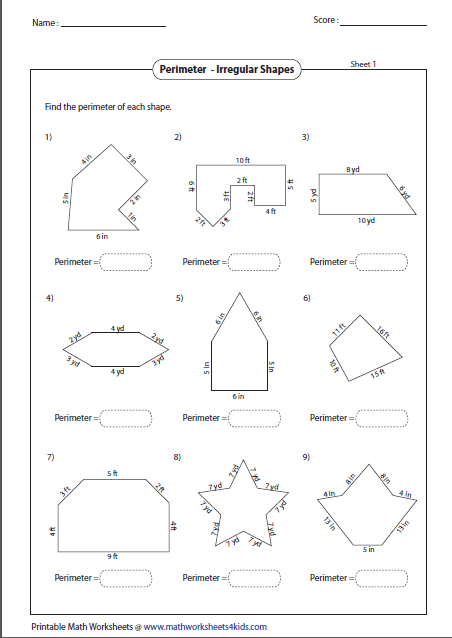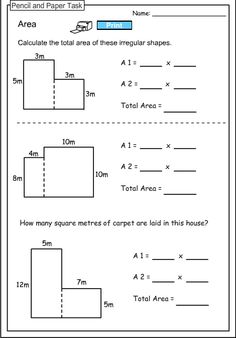

- #SAME AREA DIFFERENT PERIMETER WORKSHEETS HOW TO#
- #SAME AREA DIFFERENT PERIMETER WORKSHEETS PROFESSIONAL#
Understanding the difference between area and perimeter, as well as how to find them, will help you solve real-world area and perimeter problems! Real-World Problems The lesson shows examples of both of these scenarios. A square can also have the same perimeter as a rectangle, though their areas will be different. This is not always true! Also, two rectangles that have the same area can have different perimeters and vice versa. In the example, the square has the same area and perimeter. The lesson includes a few examples of this, with solutions. Previously, students have likely learned how to find area and perimeter by simply adding or multiplying the lengths and widths of shapes like squares and rectangles.
/English/thumb.png)

Like perimeter, we can also measure it using the standard or metric systems of measurement. It’s the number of square units that can fit inside a contained space. On the other hand, area is the inside measurement of a surface or shape (the amount of space inside the perimeter). We can determine perimeter by using the standard or metric systems of measurement. Perimeter is the continuous line around the boundary of closed geometric figures like rectangles, squares, triangles, and other polygons. The lesson begins by reminding students what the differences between area and perimeter are. The Area and Perimeter lesson plan includes three content pages. AREA AND PERIMETER WORD PROBLEMS LESSON PLAN CONTENT PAGES Area and Perimeter This page also includes lines that you can use to add your own notes as you’re preparing for this lesson. The teacher notes page includes a paragraph with additional guidelines and things to think about as you begin to plan your lesson. Finally, you could have students design their perfect bedroom, complete with measurements! Teacher Notes
#SAME AREA DIFFERENT PERIMETER WORKSHEETS PROFESSIONAL#
You could also invite a carpenter or other professional to come speak to your class about how they use area and perimeter in their jobs. Another addition to the lesson is to have students use your classroom or school to create real-world word problems. An optional addition to the lesson activity is to have students write down the sizes of the rectangles and squares. Included with this lesson is an “Options for Lesson” section that lists a number of suggestions for activities to add to the lesson or substitutions for the ones already in the lesson. To prepare for this lesson ahead of time, you can gather the supplies and copy the handouts. The supplies you will need for this lesson are scissors and the handouts. In addition, it describes the supplies you will need as well as what and how you need to prepare beforehand. You will find the lesson objectives, state standards, and number of class sessions the lesson should take to complete in this area. It also lists information in the blue box that you might find useful. The guide helps you organize the lesson and details when to hand out worksheets. You do not have to follow the guide exactly.

Classroom ProcedureĮvery lesson plan provides you with a classroom procedure page that outlines a step-by-step guide to follow. This lesson is for students in 3rd grade and 4th grade. At the end of the lesson, students will be able to solve real-world and mathematical problems involving perimeters of polygons, find unknown sides, and recognize rectangles with different perimeters/areas. Lesson Objectives and Overview: Area and Perimeter Word Problems teaches students strategies for solving word problems that include area and perimeter. Description What our Area and Perimeter Word Problems lesson plan includes


 0 kommentar(er)
0 kommentar(er)
